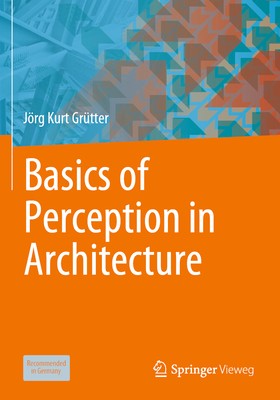
- We will send in 10–14 business days.
- Author: Jörg Kurt Grütter
- Publisher: Springer Vieweg
- ISBN-10: 3658311584
- ISBN-13: 9783658311582
- Format: 17 x 24.4 x 2 cm, softcover
- Language: English
- SAVE -10% with code: EXTRA
Reviews
Description
This book makes the extremely complex process of architectural perception far more transparent and thus contributes to a better understanding of our built environment.
Why is there so much debate about the appearance of our built environment, about the aesthetics of architecture today? Why do opinions about the aesthetic quality of buildings often diverge extremely even among experts? Why can't we agree on architecture, on what is beautiful and what is not?
Most areas of construction, such as statics and building physics, are measurable and can therefore be substantiated with objective arguments. Yet this does not apply to the unquantifiable aesthetics of architecture. Accordingly, judgments on aesthetics are always subject-specific, and strongly dependent on the viewer.
Nevertheless, the aesthetics of architecture is not just a matter of taste. Many relationships between buildings as objects and viewers as subjects can be determined objectively with the help of perceptual psychology and information theory, as this book demonstrates.EXTRA 10 % discount with code: EXTRA
The promotion ends in 20d.21:46:09
The discount code is valid when purchasing from 10 €. Discounts do not stack.
- Author: Jörg Kurt Grütter
- Publisher: Springer Vieweg
- ISBN-10: 3658311584
- ISBN-13: 9783658311582
- Format: 17 x 24.4 x 2 cm, softcover
- Language: English English
This book makes the extremely complex process of architectural perception far more transparent and thus contributes to a better understanding of our built environment.
Why is there so much debate about the appearance of our built environment, about the aesthetics of architecture today? Why do opinions about the aesthetic quality of buildings often diverge extremely even among experts? Why can't we agree on architecture, on what is beautiful and what is not?
Most areas of construction, such as statics and building physics, are measurable and can therefore be substantiated with objective arguments. Yet this does not apply to the unquantifiable aesthetics of architecture. Accordingly, judgments on aesthetics are always subject-specific, and strongly dependent on the viewer.
Nevertheless, the aesthetics of architecture is not just a matter of taste. Many relationships between buildings as objects and viewers as subjects can be determined objectively with the help of perceptual psychology and information theory, as this book demonstrates.

Reviews